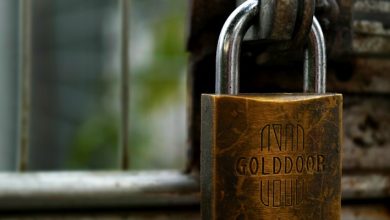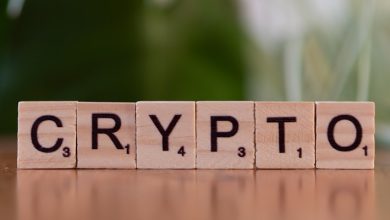How to Identify Fake Crypto Exchanges

- Understanding the risks of fake crypto exchanges
- Key red flags to look for when evaluating a crypto exchange
- Tips for verifying the legitimacy of a crypto exchange
- Common tactics used by fake crypto exchanges to deceive users
- Steps to take if you suspect you are using a fake crypto exchange
- Resources and tools to help you identify legitimate crypto exchanges
Understanding the risks of fake crypto exchanges
When using cryptocurrency exchanges, it is crucial to be aware of the risks associated with fake platforms. Fake crypto exchanges can pose serious threats to your investments and personal information. These fraudulent exchanges may lure unsuspecting users with promises of high returns or low fees, only to steal their funds or sensitive data.
One common risk of fake crypto exchanges is the lack of regulation. Legitimate exchanges are typically regulated by government authorities, which helps ensure the security of user funds. Fake exchanges, on the other hand, operate without any oversight, making it easier for them to engage in fraudulent activities.
Another risk of fake crypto exchanges is the potential for hacking. Since these platforms often lack proper security measures, they are more vulnerable to cyber attacks. This puts users at risk of having their funds stolen or their personal information compromised.
Furthermore, fake exchanges may engage in market manipulation by artificially inflating or deflating prices to deceive users. This can lead to significant financial losses for those who fall victim to these schemes. It is essential to thoroughly research any exchange before using it to ensure its legitimacy.
Key red flags to look for when evaluating a crypto exchange
When evaluating a crypto exchange, it is crucial to be aware of key red flags that may indicate the platform is fake or unreliable. One of the most common red flags is a lack of regulation or licensing. Genuine crypto exchanges are typically regulated by relevant authorities, so be wary of platforms that do not provide information on their regulatory status.
Another red flag to look out for is poor customer reviews or a lack of transparency. If a crypto exchange has a history of customer complaints or if it is difficult to find information about the team behind the platform, proceed with caution. Additionally, be wary of exchanges that offer unrealistic returns or promise guaranteed profits. Remember, if it sounds too good to be true, it probably is.
Moreover, pay attention to the security measures implemented by the exchange. Fake exchanges may have vulnerabilities that could expose your funds to theft or hacking. Look for platforms that offer two-factor authentication, cold storage for funds, and other security features to protect your investments.
Lastly, be cautious of exchanges that have a complex or confusing user interface. A legitimate crypto exchange should be user-friendly and easy to navigate. If you find it difficult to use the platform or if the design looks unprofessional, it may be a sign that the exchange is not trustworthy.
In conclusion, by keeping an eye out for these key red flags, you can better protect yourself from fake crypto exchanges and make informed decisions when choosing a platform to trade on. Remember to always do your research and exercise caution when dealing with unfamiliar exchanges.
Tips for verifying the legitimacy of a crypto exchange
When verifying the legitimacy of a crypto exchange, there are several key tips to keep in mind to ensure you are dealing with a reputable platform. One of the first things to look for is the exchange’s regulatory compliance. Make sure they are registered with relevant authorities and adhere to strict guidelines to protect investors.
Another important factor to consider is the exchange’s security measures. Look for SSL encryption, two-factor authentication, and cold storage of funds to prevent hacking and fraud. It is also wise to check for any past security breaches or negative reviews from users.
Checking the exchange’s trading volume and liquidity is crucial in determining its legitimacy. A high trading volume indicates active users and market interest, while sufficient liquidity ensures smooth transactions and price stability. Be wary of exchanges with low volume and liquidity, as they may be more susceptible to manipulation.
Researching the team behind the exchange is another valuable step in verifying its legitimacy. Look for experienced professionals with a strong background in finance and technology. Transparency about the team members’ identities and qualifications is a positive sign of a trustworthy exchange.
Lastly, take the time to read reviews and testimonials from other users to get a sense of their experiences with the exchange. Look for feedback on customer support, ease of use, and overall satisfaction. A reputable exchange will have positive reviews and a solid reputation within the crypto community.
By following these tips and conducting thorough research, you can better identify fake crypto exchanges and protect your investments from potential scams. Remember to always prioritize security, regulatory compliance, and transparency when choosing a crypto exchange to trade on.
Common tactics used by fake crypto exchanges to deceive users
There are several common tactics that fake crypto exchanges use to deceive users and steal their money. One of the most popular tactics is creating a website that looks similar to a legitimate exchange. These fake websites often have a similar design and layout to the real exchanges, making it difficult for users to tell the difference.
Another tactic used by fake exchanges is offering unrealistic returns on investments. They promise users high profits in a short amount of time, luring them in with the promise of easy money. However, once users deposit their funds, they quickly realize that the returns are too good to be true.
Some fake exchanges also use fake customer testimonials and reviews to build credibility and trust with users. They create fake accounts and post positive reviews to make it seem like other users have had a positive experience with the exchange. In reality, these reviews are fabricated and should not be trusted.
Additionally, fake exchanges may use aggressive marketing tactics to attract users. They bombard potential victims with emails, social media ads, and other forms of advertising to convince them to sign up and deposit their funds. Users should be wary of exchanges that use these tactics, as they are often trying to scam them out of their money.
Overall, it is important for users to be vigilant and do their research before using any crypto exchange. By being aware of these common tactics used by fake exchanges, users can protect themselves from falling victim to scams and losing their hard-earned money.
Steps to take if you suspect you are using a fake crypto exchange
If you suspect that you are using a fraudulent crypto exchange, there are several steps you should take to protect your investments. First, **check** the exchange’s **reputation** by looking for reviews from other users online. **Verify** the exchange’s **registration** and **regulation** status to ensure it is a legitimate platform. If you notice any **red flags** such as **poor customer service** or **unusual fees**, it is important to **stop** using the exchange immediately. **Contact** the relevant **authorities** or **regulatory** bodies to report the suspicious activity and seek further guidance on how to proceed. **Transfer** your funds to a **secure** exchange that is **trusted** in the crypto community to avoid any potential risks. By taking these **precautionary** measures, you can **safeguard** your investments and **avoid** falling victim to **scams** in the crypto market.
Resources and tools to help you identify legitimate crypto exchanges
When it comes to identifying legitimate cryptocurrency exchanges, there are several resources and tools available to help you make informed decisions. One of the most common ways to verify the authenticity of an exchange is by checking if it is registered with regulatory authorities. Regulatory bodies like the Securities and Exchange Commission (SEC) and the Financial Conduct Authority (FCA) provide lists of registered exchanges on their websites. You can also use online tools such as CoinMarketCap and CoinGecko to research exchanges and check their trading volume, user reviews, and security features.
Another useful resource for identifying legitimate crypto exchanges is social media platforms like Reddit and Twitter. These platforms have active communities of cryptocurrency enthusiasts who often share their experiences with different exchanges. By reading through these discussions, you can get a sense of which exchanges are reputable and which ones to avoid. Additionally, you can use websites like Trustpilot and Trust Wallet to read reviews from other users and see if there have been any reported scams or fraudulent activities associated with a particular exchange.
In addition to these resources, it is essential to do your due diligence before using any cryptocurrency exchange. Look for exchanges that offer two-factor authentication, cold storage for funds, and transparent fee structures. Avoid exchanges that have a history of hacks or security breaches, as these can put your funds at risk. By using the right resources and tools, you can protect yourself from fake exchanges and ensure that your investments are safe and secure.



